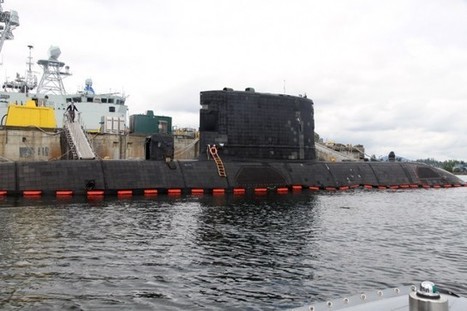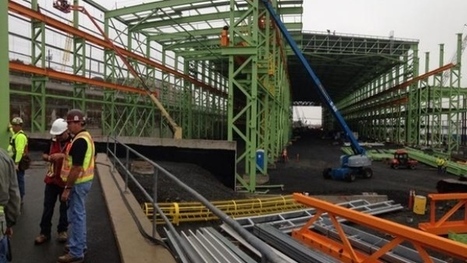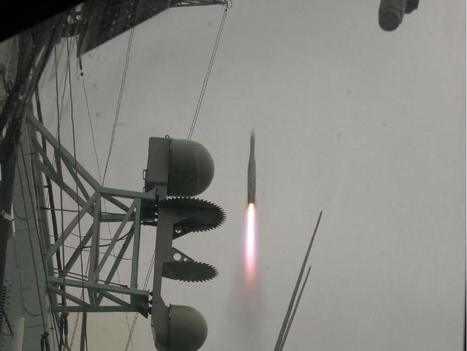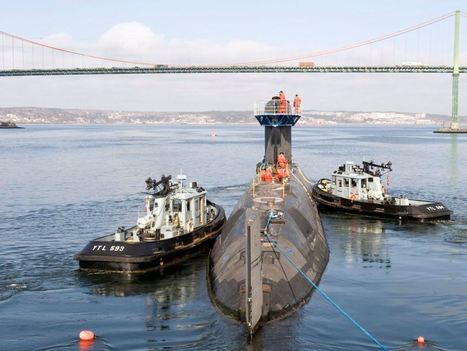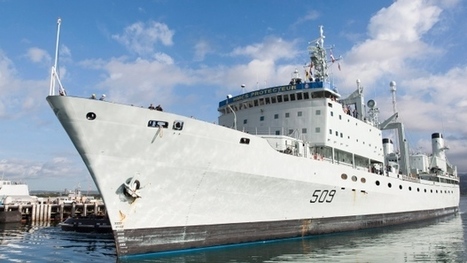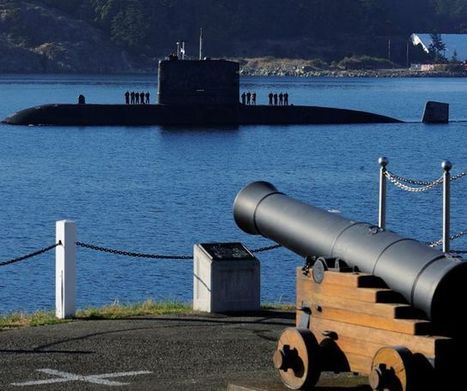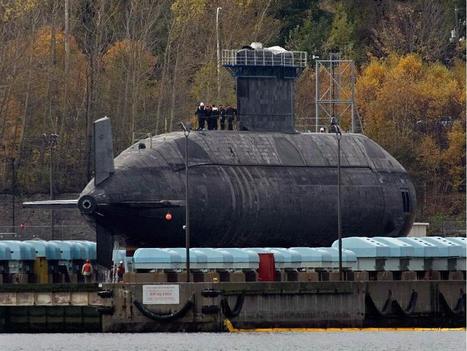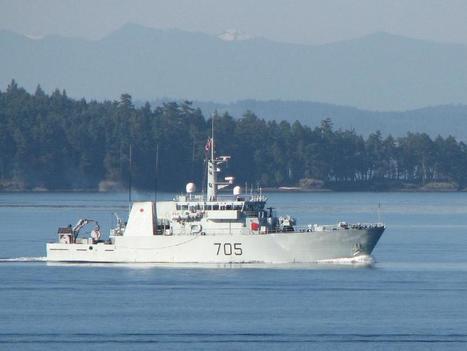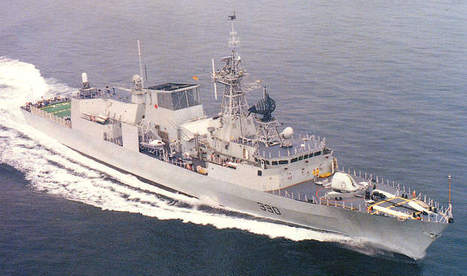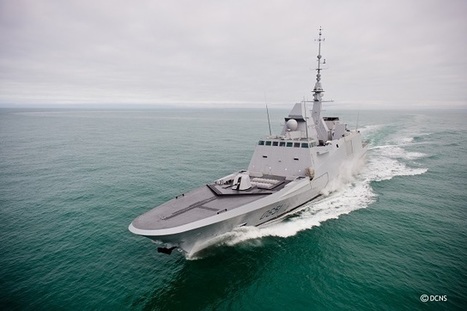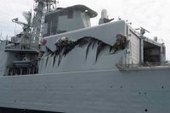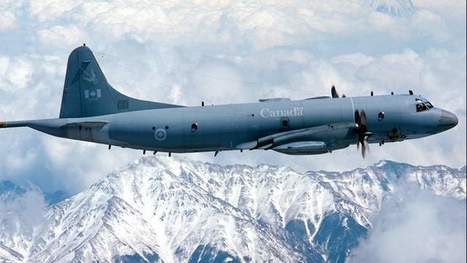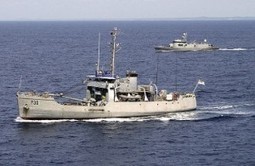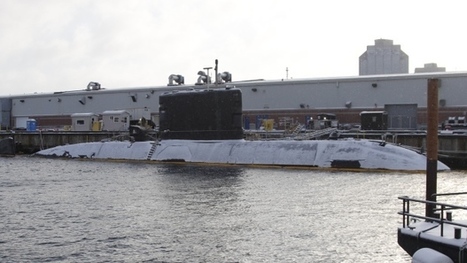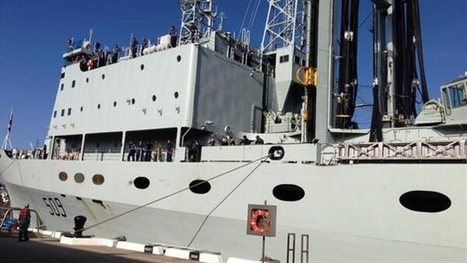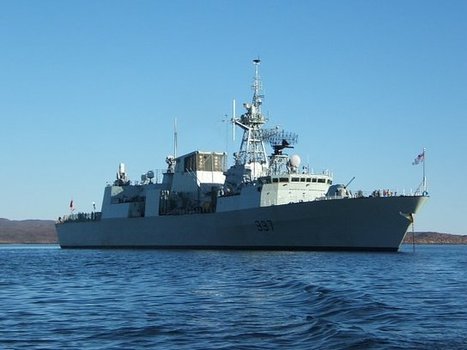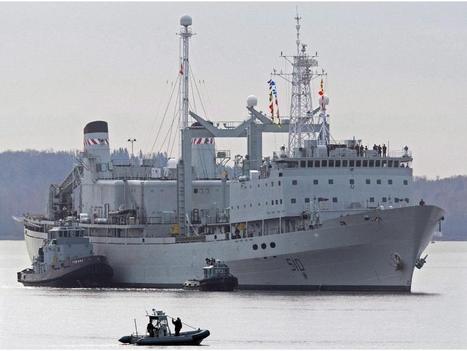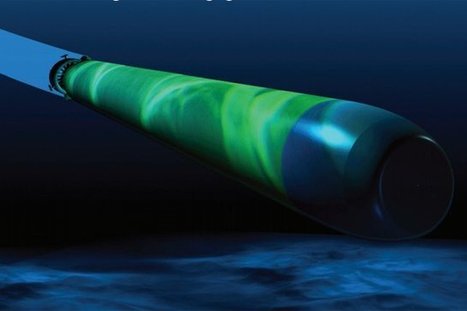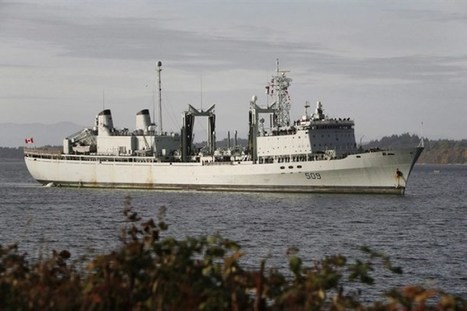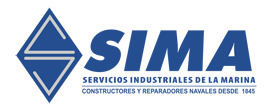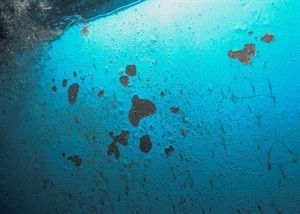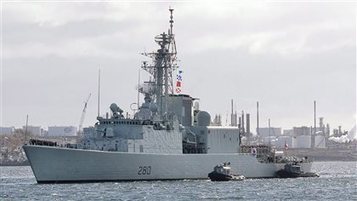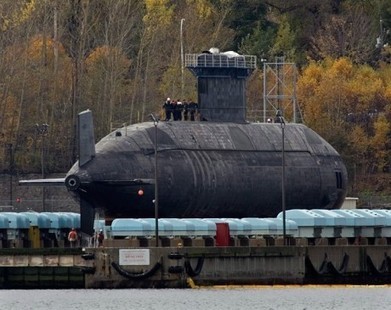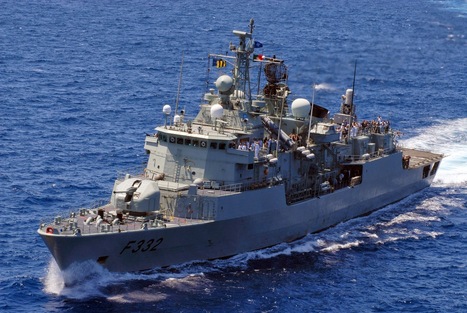 Your new post is loading...

|
Scooped by
Patrick H.
|
La flotte de sous-marins de la classe Victoria est maintenant opérationnelle, et trois des quatre sous‑marins sont disponibles pour des opérations, indique le plus récent état de la flotte de la Marine royale canadienne en date du 19 février. Les NCSM Windsor, Victoria et Chicoutimi étaient tous en mer en décembre 2014 et ont passé un total cumulatif d’environ 260 jours en mer en 2014. Le NCSM Corner Brook est actuellement à quai au chantier Victoria Shipyards afin de se soumettre à sa période en cale sèche prolongée dans le cadre du contrat de soutien en service de la classe Victoria conclu avec Babcock Canada Inc. Il devrait y rester jusqu’en 2017. Les sous-marins canadiens œuvrent généralement en un cycle opérationnel dans le cadre duquel chaque bâtiment est disponible auprès de la flotte pendant six ans, ce qu’on appelle la « période opérationnelle », suivie de deux ans de grands travaux de maintenance durant une période en cale sèche prolongée, indique la marine royale canadienne dans son état de la flotte. En raison de leur petite taille et de leur système de propulsion électrique extrêmement silencieux, les sous-marins diesel-électriques conventionnels comme ceux de la classe Victoria sont dotés de capacités furtives et d’une manœuvrabilité accrue comme on a pu le voir avec le sous-marin Victoria lors de l’exercice RIMPAC 2012. Ils possèdent des avantages dans certaines conditions par rapport aux sous-marins nucléaires, spécialement sur les côtes et dans des points d’étranglement stratégiques, ce qui fait d’eux un atout précieux pour le Canada et nos partenaires internationaux durant les années à venir... ...Outre représenter un atout stratégique pour le Canada, les sous-marins peuvent aussi jouer toute une gamme de rôles navals en temps de paix: surveillance des pêches, surveillance des trois côtes canadiennes, appui aux organismes maritimes d’application de la loi et aux autres ministères, dissuasion des terroristes, contrebandiers et pollueurs potentiels, etc.

|
Scooped by
Patrick H.
|
Seven years after announcing a plan to buy Arctic patrol ships for the navy, the Conservative government announced Friday it has signed a contract guaranteeing delivery of five of the vessels, with the possibility of a sixth, if the shipyard can pull it off. The announcement put an end — finally — to the pretext the government could buy as many as eight ships within the $3.1-billion budget set in 2007 for the Arctic/Offshore Patrol Ship program. The questions of cost and quantity have been alive for years, and doubts about the program's ability to produce the required number of vessels without blowing the budget have featured in reports by the Parliamentary Budget Officer and the auditor general. Friday, the government effectively bowed to those criticisms, announcing the program's $3.1-billion cap had recently been expanded to $3.5-billion to ensure a cash buffer for at least five, if not six, ships. At a technical briefing, a senior government official said the contract marked a milestone in the government's high-stakes, $35-billion National Shipbuilding Procurement Strategy. Rebuilding industry to rebuild the fleet The strategy was launched in 2010 as a co-operative program with industry to provide access to qualified Canadian shipbuilding in rebuilding the fleet. The government says it will create 15,000 jobs over 30 years. The program includes new supply ships and warships for the navy, new patrol vessels and an icebreaker for the Coast Guard, and the Arctic/Offshore Patrol Ships to be built by Irving Shipbuilding in Halifax. Observers have paid close attention to this program, seeing it as a barometer of success for the government's strategy.

|
Scooped by
Patrick H.
|
The Department of National Defence has announced that it is joining efforts to improve missile systems for naval vessels. The upgrade process includes the recent signing of a Memorandum of Understanding for the development of the Evolved Seasparrow Missile Block 2 – the next generation of that missile. Canada’s contribution to participate in the development memorandum of understanding is approximately $200 million, according to DND. The 11 other partner nations in this consortium are Australia, Belgium, Denmark, Germany, Greece, the Netherlands, Norway, Portugal, Spain, Turkey and the United States, it added. The Evolved Seasparrow Missile is used to protect the Halifax-class frigates against anti-ship cruise missiles and aircraft. The new Evolved Seasparrow Missile Block 2 will have increased capabilities that will improve accuracy and target recognition, DND noted. History of the ESSM from the DND backgrounder: The NATO Seasparrow Missile System Project is an international initiative that began in the late 1960s to develop an effective point defence missile system, missiles and associated launchers, in order to protect naval forces from evolving air and surface missile threats. This initiative was undertaken by several countries through a cooperative Memorandum of Understanding (MOU) and resulted in the development of the original NATO Seasparrow Missile System. The NATO Seasparrow entered service in the Royal Canadian Navy with the Iroquois-class destroyers in 1972. The NATO Seasparrow was selected for the Halifax-class’ Point Defence Missile System in the early 1980s and underwent an extensive upgrade in the late 1990s. Once a new version of the missile, the Evolved Seasparrow Missile, was completed in 2001, the Department of National Defence (DND) entered into a cooperative MOU for in-service support of the Evolved Seasparrow Missile. Currently, there are 12 nations involved in the NATO Seasparrow Consortium: Australia, Belgium, Canada, Denmark, Germany, Greece, the Netherlands, Norway, Portugal, Spain, Turkey and the United States. New point defence missile system upgrade The consortium is currently developing the next version of the defensive missile system – often referred to as Evolved Seasparrow Missile Block 2 – to manage obsolescence issues and counter evolving missile threats.

|
Scooped by
Patrick H.
|
A Defence Watch reader has informed me that HMCS Chicoutimi was handed over to the Royal Canadian Navy on Wednesday after completing sea trials and a four-year long Docking Work Period. The reader wanted to know why there was no announcement by the RCN on what should have been a major milestone in Canada’s submarine program….then suggested that as far as the federal government was concerned “when it comes to submarines there is no such thing as good publicity.”

|
Scooped by
Patrick H.
|
The federal government is trimming its expected order of Arctic patrol ships and evaluating a set of unsolicited proposals to convert civilian cargo ships for use by the Royal Canadian Navy, The Canadian Press has learned. Both steps are a sign that more modest expectations have been set for the government's national shipbuilding strategy, which has yet to deliver a single vessel some three years after the shipyards were chosen in 2011. The navy is set to retire its two replenishment ships, HMCS Preserver and the fire-damaged HMCS Protecteur, without having any replacements ready to sail, despite a decade-long replacement program. New joint support ships are only slated to begin construction in late 2016, with an in-service target of 2019-2020, but the government has yet to sign a construction deal with the designated shipyard, Seaspan of Vancouver. Officials insisted last year that Canada could rely on its allies to refuel and rearm its warships in the meantime, but a series of government and defence sources say a newer proposal from the Quebec-based Davie Shipyard would provide beefed-up civilian ships under a five-year lease. There is "growing interest" in the plan as a stopgap until the new supply ships arrive, said one defence source, speaking on condition of anonymity because the person was not authorized to speak to the media. Questions involving price, timeline and the general viability of the proposal are still being explored, a second industry source confirmed. At the same time, negotiations with Halifax-based Irving Shipbuilding for the construction of new Arctic offshore patrol ships have seen the government scale back its original plan to buy between six and eight of the vessels to enforce sovereignty in the North. The new plan is to buy five light icebreakers, with an option for a sixth. 1 ship per year Sources also say the proposed contract calls for the delivery of only one ship per year because that's all the government can afford. The deadline to sign a deal is the end of the year and there is intense political pressure to see "steel being cut" in time for next year's federal election. The Arctic ships, a pet project of the Conservatives, have had their capabilities repeatedly watered down on the drawing board in order to keep costs down. The original plan included three heavy military icebreakers; what is being proposed now is a ship that can cut through only one-year old ice and with limited armaments. Phil Lagasse, a defence expert at the University of Ottawa, said the back-room maneuverings only confirm that money remains the biggest problem for the strategy and that the government is prepared to wait and accept fewer ships. That could be bad news for communities like Halifax, which were counting on building everything the government promised. "Politically, it was oversold. I think we can agree on that," said Lagasse, who added that the national shipbuilding procurement strategy, as it's known, was only intended to set up a framework for building ships in Canada. "[The strategy] doesn't magically solve your planning problem. It doesn't solve your defence inflation problem. None of that is solved just because you successfully selected two yards." Concern around leasing Sahir Khan, a former official at the parliamentary budget office who studied the joint support ship program, said Canada — like its allies — has yet to be able to balance the kind of warships it wants and needs with the amount of money it's willing to spend. "No matter how long we delay having such an open and transparent debate in Canada, it is highly unlikely that our path will diverge from that of our peers," said Khan, who is now at the University of Ottawa. Both Khan and Lagasse expressed concern about a lease of temporary supply ships, saying the government may end up paying through the nose, depending upon how it's structured. Eric Lerhe, a retired commodore, said the stopgap measure for the supply ships isn't a surprise because of the retirement of the existing vessels, which — although long past their shelf life — were not due to leave the service for another couple of years. There were published reports Canada was considering a deal to acquire mothballed U.S. Navy replenishment ships. That plan was dismissed, partly because the American ships were costly to operate and required a crew complement twice that of the Canadian navy. Producing only one Arctic ship a year is not a bad thing because it allows for a smooth introduction to service, said Lehre, who's now an adjunct professor at Dalhousie University in Halifax.

|
Scooped by
Patrick H.
|
The Royal Canadian Navy’s leadership has sent a “Bravo Zulu” to the members of HMCS Chicoutimi for commencing sea acceptance trials on September 28 near Esquimalt, B.C. More from the RCN: The trials are expected to last seven to eight weeks and will test the Victoria-class submarine’s engineering systems and capabilities, as well as its crew, to ensure that all are performing within required parameters. These trials are an important step as the submarine nears the end of its maintenance and refit period, a phase called the Extended Docking Work Period, or EDWP. Chicoutimi’s EDWP began in 2010 and was the first-ever to be conducted by the RCN’s industry partners. Chicoutimi is expected to return to the Canadian fleet later this year upon successful completion of this exhaustive test and trial program. When this milestone takes place, Canada will have three submarines at sea operating, with the fourth in deep maintenance. October 5th, 2014 marks the 10th anniversary of a serious fire onboard HMCS Chicoutimi, which occurred during her transit sail from the United Kingdom to CFB Halifax. The RCN has learned much from this tragic incident, resulting in many positive changes that have led to safer vessels, both within the RCN and for our allies. The Victoria-class submarine fleet is an important strategic asset for Canada. This latest milestone for HMCS Chicoutimi comes as the Canadian Submarine Service celebrates its centenary. For 100 years, submarines – and submariners – have been our navy’s special forces. Those who operate, and those who sustain this superb weapons system are unique in maritime service.

|
Scooped by
Patrick H.
|
The cost to operate and maintain Canada’s submarine fleet is increasing, forcing the navy to request more funding to keep the vessels at sea. The Royal Canadian Navy needs an additional $19 million for the sub fleet’s operating and maintenance costs for the period up to spring of 2016, the service’s new business plan states. That plan, which covers spending from 2014 to 2017 was obtained by the Citizen. Ongoing government-ordered cuts “has severely reduced the RCN’s ability to mitigate the steadily increasing costs of the Submarine operating and maintenance,” the plan pointed out. The plan was signed off in December by Vice-Admiral Mark Norman, the navy’s top officer. The navy is committed to the submarines and has no intention of sidelining the boats, a navy official said. Over the years, the service has redirected funding from other areas to pay for their upkeep. “The RCN is committed to operationalizing the Victoria-class submarine fleet by end of 2014 and intends to operate the Victoria-class submarine fleet until the mid-2020s,” navy spokesman Lt.-Cmdr. Al Blondin said in an email Thursday. “A plan has therefore been put in place to ensure that the submarine program will continue to be appropriately funded.” A request for more money was submitted and approved. Details on how much will be provided to the submarine fleet were not released. But Blondin said the “submarine program is appropriately funded.” The business plan indicated that continued funding for the submarines would become difficult as Halifax-class frigates, which were being modernized, return to sea. “As the surface ships are returned to operations the ability of the RCN to mitigate the increasing operations and maintenance costs of the Vic Class Subs, as they progress to a steady state operating tempo of an average of 140 Sea Days per submarine is greatly diminished,” it added. The navy also hopes to increase numbers of qualified submariners by boosting the availability of training on board the boats. The submarine program, which has already cost around $900 million, has been dealing with maintenance issues that, over the years, have limited the availability of the boats for operations. Canada purchased the subs second-hand from Britain and took delivery of the boats between 2000 and 2004. The navy said it did a thorough examination of the vessels to ensure they met Canadian needs, yet problems started materializing almost immediately. High-pressure welds had to be replaced and cracks were found in some of the valves on the four subs. Steel piping also needed to be replaced because the boats were put into storage in the United Kingdom with water in their fuel tanks. HMCS Chicoutimi was damaged by a fire in 2004 that killed one officer. HMCS Corner Brook struck bottom off the west coast of Vancouver Island in 2011. Navy officers acknowledge the service is facing challenges because of funding cuts and delays in the building of new ships. Last week, Norman announced the navy was decommissioning its two supply ships and two of its destroyers. The navy is particularly concerned about the loss of its supply ships, which are used to provide ammunition, fuel, food and other provisions to warships at sea. The U.S. Navy has offered to provide one of its supply ships to help provide provisions to Canadian warships from time to time. It has also offered Canada the possibility of purchasing two of its surplus supply vessels. But the RCN has yet to decide how it wants to proceed. Norman said the navy was investigating options to minimize the loss of its at-sea resupply capabilities until new support ships arrive in 2019. “These options include potential enhancements or additions to existing agreements with key allies, as well as some made-in-Canada solutions,” he said.

|
Scooped by
Patrick H.
|
The head of the Royal Canadian Navy has taken the rare step of ordering one of its ships to return from an international exercise because of misconduct by its sailors. Vice Admiral Mark Norman issued the message Monday, citing three incidents involving the crew of HMCS Whitehorse that took place during Exercise RIMPAC 2014. The message, leaked to the Ottawa Citizen, also noted that Norman was appointing a senior officer to look at what is behind recent incidents involving the breakdown of professional and personal conduct in the navy. RIMPAC is the world’s largest multinational naval exercise and takes place mainly in Hawaii. But some aspects of the exercise are conducted off the coast of California and on July 1, HMCS Whitehorse was docked in San Diego. Whitehorse arrived early Monday at its home port of CFB Esquimalt, B.C., navy officials confirmed Monday night. Norman didn’t provide details about the incidents in question. Navy officials, however, told the Citizen that two occurred on board the ship. The other involved the arrest of a Canadian sailor by U.S. police. In his message, Norman said he recently reflected with tremendous satisfaction about the many recent accomplishments of navy personnel, both at home and abroad. “And so, it is with great disappointment that I must now signal why I took the difficult decision to return HMCS Whitehorse to Esquimalt from Exercise RIMPAC 2014, following three incidents of personal misconduct ashore,” he wrote in the navy-wide message to sailors. “While the actions of a few sailors in Whitehorse was the trigger for my decision, I recalled her home because I am troubled that across the RCN a small number of our personnel have fallen short of the timeless expectations of naval service and have failed in their roles as ambassadors of their navy and country — no matter where they serve.” Norman said in his message he is satisfied that when incidents of personal misconduct occur, they are addressed by individual commanders quickly, firmly and fairly. But he wrote that when such incidents are considered collectively, they raise a deeper concern. Norman noted that such incidents could distract the navy from operational excellence and put the health and safety of individuals at risk. Because of that, Norman said he is appointing a senior officer to conduct a review of “policies and procedures that underpin the hands-on leadership of our personnel.” That reviewing officer will “ensure that we are doing everything we can, and should, to provide clear expectations and direction for all personnel as it relates to professional conduct and responsibility, both on and off duty,” he added. Norman noted that the actions of sailors reflect not only on themselves but as well on the navy and Canada.

|
Scooped by
Patrick H.
|
L’ex ministre de la Défense nationale et actuel ministre de la Justice et ministre régional pour la Nouvelle-Écosse, Peter MacKay, a annoncé que le gouvernement venait d’octroyer un contrat de 18,5 millions $ à Saab Microwave Canada ltée. Ce contrat est pour la révision des radars de surveillance et de pointage de systèmes d’armes à bord des douze frégates de classe Halifax de la Marine royale canadienne. Il fait partie du Projet de modernisation des navires de la classe Halifax et de prolongation de la vie de l’équipement des frégates. Le gouvernement aura la possibilité de prolonger par trois fois un an ce contrat. La modernisation des frégates de classe Halifax a pour objectif que les douze navires de la Marine royale canadienne puissent continuer à réaliser toutes les missions nécessaires des Forces armées canadiennes et du gouvernement du Canada. Chaque frégate est équipée de radars qui permettent à l’équipage d’obtenir une vue essentielle de ce qu’il y a aux alentours et d’avoir un système de pointage d’armes qui permet d’engager les menaces aux aéronefs, aux navires et celles liées aux missiles. Lors de leurs travaux de modernisation, les navires reçoivent les éléments suivants: un nouveau système de commande et de contrôle, une nouvelle capacité de radar, un nouveau système de guerre électronique, et des communications et missiles améliorés. «Alors que le Projet de modernisation des navires de la classe Halifax et de prolongation de la vie de l’équipement des frégates se déroule, celui-ci devient une histoire de grande réussite pour les Forces armées canadiennes, et surtout, pour la Marine royale canadienne. Les améliorations aux radars de surveillance et de pointage de systèmes d’armes font en sorte que nos marins sont munis du matériel sécuritaire et fiable dont ils ont besoin pour faire face aux défis du 21e siècle.» Rob Nicholson Ministre de la Défense nationale «Notre gouvernement s’engage à faire en sorte que nos hommes et femmes en uniforme possèdent les outils dont ils ont besoin pour continuer leur travail au nom de tous les Canadiens. Le projet que nous annonçons aujourd’hui rendra possible la modernisation des systèmes de combat des frégates afin de s’assurer que celles-ci demeurent efficaces tout au long de leur durée de vie utile et au cours de la prochaine décennie. De plus, il renforcera l’économie de la Nouvelle-Écosse. Les travaux réalisés par l’entreprise Saab Microwave Canada ltée et visant à améliorer les systèmes de radar fourniront des emplois continus et hautement spécialisés pour des Canadiens dans la région de Halifax et contribueront à la prospérité à long terme de notre province.» Peter MacKay Ministre de la Justice

|
Scooped by
Patrick H.
|
DCNS Technologies Canada Inc. with headquarters in Ottawa, represents the first step towards the creation of Naval Systems Integration Center that was announced by Patrick Boissier, Chairman & CEO, during his November 2013 conferences given in Halifax, Ottawa and Toronto to establish a long-term strategic partnership with Canada. In particular, DCNS Technologies Canada Inc. will lead the design of the Canadian version of FREMM frigate, a contender for the Canadian Surface Combatant (CSC) programme under the National Shipbuilding Procurement Strategy (NSPS). The Canadian shipbuilding industry has embarked on the largest procurement project in its history. Valued at over $35 billion dollars, the NSPS, with its made-in-Canada approach to shipbuilding, will bring over 30 years of economic growth and impact to multiple Canadian sectors through direct and indirect investments. The sustainable strategic partnerships that DCNS is proposing with Canadian industry, will support the most formidable naval defence program ever undertaken in Canada. In line with the country’s new Defence Procurement Strategy, the Canadian shipbuilding and marine industry will benefit directly from the CSC program.
The creation of DCNS Technologies Canada Inc. reflects the group’s commitment to pursue its international development and strengthen its presence in Canada through long-term ties with Canadian industries in defence sector but also for civilian activities like Marine Renewable Energy. DCNS has already developed a strategic partnership with Nova Scotia to build next generation tidal energy project in Bay of Fundy. Its subsidiary OpenHydro, specialized in tidal turbines, will deploy a fully grid-connected 4MW tidal array to be in place in 2015. Moreover, the Group signed in 2013 a collaboration agreement with the Canadian University of Dalhousie concerning structural dynamics in marine environment.
Link to FREMM Frigate (Aquitaine class) technical datasheet

|
Scooped by
Patrick H.
|
With more than half its ships and submarines being repaired, modernized or in a reduced state of readiness, the Royal Canadian Navy is acknowledging that it has hit the low point in availability of its vessels. Of a total of 33 main ships and submarines, 15 are being repaired or undergoing upgrades, while another four are at a lesser state of readiness as they conduct tests on recently installed and modernized systems. The navy’s 12 frigates are being upgraded as part of the Halifax-class modernization program. Involving $5 billion worth of work, the project will see engineering, radar and weapon systems upgrades, as well as other improvements made to the vessels, Santarpia said. As part of that process, five frigates are unavailable for operations because they are either in dry-dock or being prepared for the upgrade process. The Halifax-class frigates are considered the backbone of the navy. As vessels come out of the modernization process, they go through various stages of readiness as the new systems are being verified and tested and the crew conducts training. “They are available for operations, just not at the very highest levels,” Santarpia explained. Defence analyst Martin Shadwick said the situation is a result of having a “compact” maritime force and a large number of aging vessels that had to be modernized. He said a further crunch time for the maritime force will come in the next four years. That is when three aging destroyers, which provide command and control as well as overall air defence for naval task groups, are removed from service. At that point, the navy goes from the 15 frigates and destroyers, which are the mainstays of the service, down to 12 frigates. In addition, the navy will be without supply ships to provide fuel and provisions at sea. Those two aging ships are to be retired before 2019 and their replacements will not be ready in time... ...Besides the modernization program, the navy has had to deal with a number of incidents which sent ships into repair yards or limited their availability. -In February, an engine room fire crippled HMCS Protecteur as it was sailing north of Hawaii. The supply ship was towed to Pearl Harbor where it still remains. Some in the navy expect the ship to be scrapped because of the extent of the fire damage. -In August, HMCS Protecteur was involved in a collision with HMCS Algonquin during towing exercises en route to Hawaii. There were no injuries but both ships were damaged. -In April 2013, an American fishing trawler rammed into HMCS Winnipeg while it was docked at CFB Esquimalt, BC. -In December 2012, HMCS Athabaskan was left with six punctures when a tugboat crashed into it and tow lines to the ship snapped. It will cost about $2 million to fix. -In June 2011, HMCS Corner Brook rammed into the ocean floor, damaging the submarine and slightly injuring two on board. -In addition, the Citizen reported that HMCS Iroquois will be limited in future operations after cracks were discovered on the upper part of the vessel in late February. The destroyer will only be able to operate at limited capacity when the weather is bad. Specifically, the Iroquois will be unable to navigate waters when the waves are particularly heavy. The vessel typically operates in the North Atlantic Ocean, known for its rough water.

|
Scooped by
Patrick H.
|
The Harper government has reached a deal to amend its contract with the U.S. manufacturer of the long-delayed CH-148 Cyclone maritime helicopters, The Canadian Press has learned. The agreement with Sikorsky Aircraft Corp., which is still being vetted by government lawyers, paves the way for next year's retirement of Canada's aging fleet of Sea King choppers, said several defence and government sources. "We have a contract," said one senior official, who spoke on condition of anonymity because he was not authorized to speak to the media. The inability of the Conservatives to replace the five-decade-old anti-submarine helicopters, which operate primarily off the decks of navy frigates, has been a huge political embarrassment and the revived Cyclone delivery just happens to coincide with the run up to the 2015 election. Even still, the Cyclones — a military version of Sikorsky's S-92 helicopter — won't be fully operational until 2018. Former defence minister Peter MacKay once referred to the program as the "worst procurement in the history of Canada.” Public Works, which oversees the $5.7-billion project, announced in January the government would try to reach a revised agreement to allow for the delivery and gradual introduction of the yet-to-be proven Cyclones. So far, only four of the 28 aircraft, which were initially ordered in 2004 by Paul Martin's Liberal government, have been delivered for flight testing at the air base in Shearwater, N.S., near Halifax. Defence and government sources said Monday no additional money would be put into the program and Sikorsky would only get paid for the delivery of capable aircraft. It will be early next month before all of the legal text of the agreement is signed by government officials. It's the second time the Conservatives have negotiated a contract amendment with Sikorsky, which has missed previous deadlines to deliver completed helicopters, accruing more than $88-million in penalties in the process. How the new arrangement may or may not affect those fines is unclear. The air force is prepared to take ownership of up to eight test helicopters before the Cyclones are declared capable, said another defence official, who was also not authorized to speak publicly about the deal. Word of the new arrangement came as the U.S. Federal Aviation Administration issued a special air worthiness bulletin about the Cyclone's civilian equivalent, warning of salt crusting on engines of helicopters used in that country for search and rescue. The watchdog said Monday the "concern is not an unsafe condition," but pilots should be alert for a loss of power or the stalling of compressors in light of the findings. There have been myriad technical concerns in converting the S-92 into a more hardened military version; many in the defence industry say both the government and Sikorsky under-estimated the challenges.

|
Scooped by
Patrick H.
|
VICTORIA, BRITISH COLUMBIA — Budget problems have scuttled Canada’s quest for a large, long-range maritime surveillance aircraft, with the focus now shifting to the acquisition of a smaller, more affordable plane, military and industry officials said. In the meantime, as a stop-gap measure, the Royal Canadian Air Force will upgrade additional Aurora CP-140 surveillance planes. Canadian Defence Minister Rob Nicholson announced March 19 that Canada was upgrading four more Auroras, bringing the total of modernized surveillance aircraft to 14. The Auroras were originally purchased in 1981, and the Air Force now expects the planes to keep flying until 2030. In announcing the upgrade project, Nicholson said the deal represented the “best value possible for Canadian taxpayers.” Over the last decade, other Auroras have received new wings and upgraded radars and sensors. The Aurora is a long-range patrol aircraft used primarily for maritime surface and sub-surface surveillance. Its US military equivalent is the P-3 Orion. The decision to upgrade more Auroras and delay the purchase of new maritime surveillance aircraft is directly linked to a lack of funding, Air Force officers said. The ruling Conservative Party government’s Canada First Defence Strategy originally called for replacing the Aurora fleet with 10 to 12 maritime patrol aircraft by 2020. The budget for that was set at CAN $3 billion (US $2.7 billion) but Air Force procurement specialists determined they could not purchase a fleet of large, long-range surveillance planes such as the Boeing P-8A for that amount of money. Additional funding is not expected to be available in the future for the surveillance aircraft purchase as the military is planning other major procurements, such as the $9 billion to $14 billion purchase of new fighter jets and a $30 billion shipbuilding program to buy new supply vessels, Arctic patrol ships and a new surface combatant fleet. A number of aerospace firms are positioning themselves to deal with the new fiscal reality facing the surveillance aircraft program. Airbus Military has provided information to the Air Force on the use of its C-295 aircraft to fill the role of a medium-sized maritime surveillance aircraft. Airbus Military officials also have pointed out to the Canadians that Chile has acquired the C-295 in an anti-submarine warfare configuration. Boeing and Field Aviation of Toronto are also working on what company officials call a “P-8 light.” That maritime surveillance aircraft would be based on a Bombardier Challenger 605 airframe but use technology developed for the P-8A Poseidon. The baseline configuration features an active electronically scanned array multimode radar, an electro/optical/infrared sensor, electronic support measures, a communications intelligence sensor and automated identification system, according to Boeing. On March 5, Boeing and Field Aviation announced they had conducted a test flight of a prototype to verify the handling qualities of the aircraft had not been affected by the airframe modifications. Following further testing in the US, Field Aviation will deliver the modified demonstrator aircraft to Boeing in Seattle for integration of sensors and communications subsystems. “We are going to take it for export to the global market,” said Brian Beyrouty, Boeing’s senior manager for international strategic partnerships for the Americas. He noted there is a market for this capability among nations that might not be able to afford the P-8.
|

|
Scooped by
Patrick H.
|
The Canadian Government has presented two speed boats, oxygen cylinders and scuba diving fins to the Ghana Navy to enhance its patrol of Ghana’s waters. Mr Christopher Thornley, Canadian High Commissioner to Ghana, presenting the items on behalf of the Canadian Government said the items form part of a one million dollar support to the Ghana Armed Forces. Mr Thornley said the support, which comprised equipment and training of personnel was to cement the partnership between the two countries. He said the Canadian Government would continue to work with Ghana towards intensifying security to help prevent human smuggling into Canada as well as stamping out of illegal activities including narcotic issues. Major Ignatius Awuni (rtd), Operations Officer at the National Security, receiving the items on behalf of the Navy, said the Ghana Armed Forces last year received some items from the Canadian Government. Major Awuni (rtd), who is also the Training Coordinator for the programme, indicated that as part of the partnership, trainers from South Africa have so far trained 18 personnel consisting of 10 from the Ghana Navy, six and two from the Ghana Army and Air Force in that order. Those trained, he noted, would go to South Africa for a specialist course to enable them come back and train others who would be used to expand the Marine Combat Team.

|
Scooped by
Patrick H.
|
After months out of the water for unscheduled repairs and maintenance, HMCS Windsor is back in the water with some restrictions. The submarine was taken out of operation in March 2014 because of a faulty generator — 18 months after its extended docking work period from 2007 to 2012. That planned docking period came with a price tag exceeding $200 million. Repairs and upgrades completed last year total just shy of $17.2 million — less than the $18.5 million the Royal Canadian Navy had budgeted. The generator repair — which the navy told CBC News in February 2014 would cost $1.5 million — accounted for nearly $2.6 million of the $17.2 million total. Other costs included: - Preventative maintenance: $2.8 million
- Corrective maintenance: $6.1 million
- Installation of engineering changes: $5.7 million
The navy would not reveal the number of days HMCS Windsor was operational and in the water last year. "Prior to going into the work period in March, the Windsor was in the water and she did sail. Then again when she completed the work in at the end of November, she was able to sail in December," said Cmdr. Jay Harwood. "There's a wide, wide scope of what operationally ready is, from a lower state of readiness or a standard readiness up to a high readiness. So Windsor is operationally ready now to conduct the trials that it's required to do, to conduct the training that it's required to do." That includes refreshing crew members on their training. Harwood would not elaborate on the restrictions placed on HMCS Windsor, but said the vessel should be at "high readiness" by the spring or early summer. "I won't get into any specifics here, but [HMCS Windsor is] able to conduct a range of operations," said Harwood. If NATO called on Canada for HMCS Windsor, the submarine's deployment "would depend on what NATO's request was for the submarine," he said. "There are some very important trials that we need to conduct to further expand what she is able do right now," Harwood said. HMCS Windsor's next extended docking period is scheduled for 2018. The Windsor is one of Canada's four Victoria Class submarines, including HMCS Victoria, HMCS Corner Brook and HMCS Chicoutimi. According to the navy, HMCS Windsor was at sea for 174 days between November 2012 and March 2014.

|
Scooped by
Patrick H.
|
Une étude portant sur les façons dont la marine canadienne pourra combler son manque de navires ravitailleurs est entre les mains du ministre de la Défense nationale, Rob Nicholson, mais elle ne contiendra pas toutes les solutions possibles. Le choix du modèle de navire qui remplacera le NCSM Preserver et le NCSM Protecteur, qui seront mis hors de service plus tôt que prévu, divise de plus en plus les milieux militaires canadiens. Le gouvernement Harper envisage de construire deux navires de soutien interarmées à Vancouver dans le cadre de la Stratégie nationale d'approvisionnement en matière de construction navale, mais ces vaisseaux ne seront pas construits d'ici huit ans. En attendant, la Défense nationale cherche une façon de combler le manque de bateaux. Diverses solutions ont été proposées au ministre, a affirmé le commandant de la marine canadienne, le vice-amiral Mark Norman, à un comité de la Chambre des communes, le mois dernier. Toutefois, l'ébauche d'un rapport indépendant ne fera pas partie de l'étude soumise au ministre. Ce document remet en question l'idée d'attendre la fin de la construction de ces bateaux. L'analyse en question, rédigée par deux experts de l'Institut de la conférence des associations de défense, traîne dans les bureaux du directeur parlementaire du budget (DPB). Elle devait faire partie du rapport du DPB sur la question, mais elle a été laissée de côté parce que des officiers supérieurs de la marine à la retraite désapprouvaient les recommandations. Le colonel à la retraite George Petrolekas et un spécialiste des questions militaires, Dave Perry, proposaient l'achat d'un navire français de la classe Mistral et de convertir au moins deux pétroliers civils pour les missions de ravitaillement. Selon eux, cette solution donnerait une plus grande capacité et une plus grande flexibilité à la marine canadienne tout en coûtant moins cher que le programme actuel. Le DPB refuse de discuter des raisons qui l'ont poussé à ne pas inclure cette recommandation dans son rapport final. Il s'est contenté de dire qu'il avait commandé plusieurs études pour faire le tour de la question.

|
Scooped by
Patrick H.
|
Le Canada investit 4,3 milliards $ dans la modernisation frégates de classe Halifax, passerelle vers la flotte future, et le ministre de la Défense nationale, Rob Nicholson, a annoncé ce lundi 24 novembre une étape importante dans la modernisation des quatre premières frégates de cette classe: la première d’entre elles, le NCSM Fredericton sera déployée début 2015 et les experts du ministère de la Défense assurent en outre que l’échéancier de l’ensemble du programme sera respecté. Les navires de classe Halifax sont appelés à jouer un rôle d’autant plus important que le Canada se retrouve maintenant avec un seul destroyer et que la Marine Royale canadienne pourrait avoir de la difficulté à maintenir son état de préparation. Le projet de modernisation des navires de classe Halifax et de prolongation de la vie de l’équipement des frégates (MCH/FELEX) est un programme de 4,3 milliards $ visant à moderniser et améliorer la flotte existante. Il demeure dans les limites du budget, et les travaux devraient être achevés d’ici 2018, a assuré aujourd’hui le ministère de la Défense à la session d’information technique qui a suivi l’annonce. En septembre dernier, on apprenait que quatre navires allaient être retirés du service actif, dont les destroyers NCSM Iroquois et NCSM Algonquin, ce qui laissait la Marine royale canadienne avec un seul destroyer, l’Athabaskan. Les destroyers sont de navires commandement et de contrôle, mais ils étaient également les seuls navires de guerre canadiens dotés des systèmes de missiles de défense aérienne à longue portée. C’est dire à quel point la modernisation des frégates de la classe Halifax pour ajouter des systèmes de radar et de commandement et de contrôle, tout en améliorant les capacités radar et de missiles, est d’une importance cruciale pour la Marine royale canadienne. Passerelle vers la flotte future L’annonce de la modernisation des quatre premières frégates tombe à pic, alors que le mois dernier l’évaluation des forces navales menée par le Chef – Service d’examen révélait que la Marine Royale canadienne, qui traverse actuellement la période de modernisation et de renouvellement la plus intense et la plus complète de son histoire en temps de paix, pourrait avoir des difficultés à maintenir son état de préparation. Mis en service de 1992 à 1996, les navires de la classe Halifax font actuellement l’objet, comme prévu, d’une modernisation de mi-vie qui comprend un nouveau système de gestion de combat, de nouveaux radars, un nouveau système de guerre électronique, des systèmes de communication et de missiles améliorés ainsi qu’un nouveau Système intégré de plate-forme.

|
Scooped by
Patrick H.
|
Canada’s navy is looking at acquiring a commercial vessel as a stop-gap measure to supply its warships while they are at sea, says the country’s top sailor. Vice-Admiral Mark Norman, the head of the Royal Canadian Navy, said the service has received a number of proposals from companies, offering commercial ships to deal with the gap created by the retirement of the service’s supply vessels. Norman announced several weeks ago that HMCS Preserver and HMCS Protecteur would be decommissioned. But since replacement vessels will not be available until at least 2019 or 2020, the Royal Canadian Navy will be left without the ability to transfer fuel and others supplies to its warships while they are on missions. “There have been a small number of proposals to potentially modify some commercial vessels to provide an interim capability,” Norman confirmed Tuesday. “We’re in the process of evaluating the viability of those proposals and the potential for those proposals to be recommended, or not, in fairly short order.” There has also been suggestions the Canadian navy would purchase two surplus U.S. supply ships. But Norman ruled that out. He noted that the lease of U.S. supply ships is being looked at but suggested that proposal might not move ahead. “We’re unlikely to see a dedicated short- to medium-term capability through a lease but we haven’t ruled it out yet,” Norman said. “Those discussions are happening. I should know more in the next week or two.” Canadian military sources say the navy will most likely deal with the gap by better co-ordination of its ship deployments to coincide with the availability of U.S. supply vessels. The navy made the decision to retire HMCS Protecteur and HMCS Preserver after reviewing the status of the aging ships and examining how much money would be needed to repair them. HMCS Protecteur was seriously damaged in a fire earlier this year off the coast of Hawaii. The navy says HMCS Preserver was rapidly approaching the end of its operational life, which was planned for 2016. Engineering surveys conducted in recent months identified levels of corrosion in HMCS Preserver that have degraded the structural integrity of the ship below acceptable limits, the navy added. Those ships will eventually be replaced by two Joint Support Ships. But construction of those vessels has yet to begin. The navy has been trying for more than a decade to acquire new supply ships. First announced in 2004 by the Liberals, then re-announced in 2006 by the Conservatives, the supply ship project has had more than its share of problems. Bids were cancelled in 2008 and the project had to be restarted. The navy expects the ships to be ready by 2020. Concerns have also been raised about the level of funding set aside for the Joint Support Ships. In 2013, the office of the parliamentary budget officer noted the project would cost $4.13 billion, far more than the $2.6 billion budgeted by the Conservative government.

|
Scooped by
Patrick H.
|
Le Canada dépensera environ 41 millions $ pour mettre à niveau et moderniser les torpilles de ses sous-marins de classe Victoria si on en croit un récent communiqué de presse de la Defense Security Cooperation Agency américaine. La Defense Security Cooperation Agency (DSCA), est l’agence du ministère américain de la Défense qui est chargée, notamment, des transferts de matériel de défense. Elle doit en outre aviser le Congrès pour ces transferts. C’est ainsi qu’on a pu apprendre que les États-Unis a approuvé la vente au Canada de «kits» pour la mise à niveau de torpilles MK-48 Mod 7 Advanced Technology (AT), des équipements associés, des pièces, les contrats de vente incluant la formation et le soutien logistique pour un coût estimé de 41 millions $.
Plus de la DSCA nouvelles de presse: Le gouvernement du Canada a demandé à acquérir ces «kits» de mise à niveau MK-48 Mod 7 Advanced Technology pour faire mettre à niveau ses 12 torpilles MK-48 torpilles, les faisant passer de de Mod 4 à 7 Mod. Le Canada a l’intention d’utiliser les torpilles MK 48 Mod 7AT sur ses cous-marins de classe Victoria. Le fournisseur principal sera Lockheed Martin Sippican, Inc., de Marion, au Massachusetts. Les torpilles MK-48 Nod 7 sont les torpilles lourdes les plus avancées de la US Navy et permettent d’accroître l’étendue opérationnelle aussi bien dans les zones près du littoral qu’en mer, dit Lockheed. Les MK 48 Mod 7 ont la capacité d’émettre et de recevoir sur une large bande de fréquence et de tirer avantage des techniques de traitement de signal à large bande pour améliorer de façon significative la détection et l’acquisition de cible de la torpille, augmentant l’efficacité de l’attaque, souligne le fabricant.
Leur conception évolutive et leur la nature modulaire rend la mise à niveau des versions antérieures des torpilles Mk 48 relativement simple et ne nécessite pas une nouvelle conception et une nouvelle certification des torpilles, ajoute la société américaine. Les programmes de mise à niveau en cours feront en sorte que la torpille MK 48 «maintiendra sa supériorité sur toute menace émergente». fait aussi valoir Lockheed. En outre, le Canada dispose d’une infrastructure pertinente et d’une expérience avec des torpilles modernes, y compris les MK-48 Mod 4/4M et les MK-46 Mod 5A (SW), écrit l’agence américaine, ajoutant que le Canada n’aura pas de difficultés à intégrer ces mises à jour.

|
Scooped by
Patrick H.
|
OTTAWA – The Canadian navy is going to retire four veteran ships that have been in service for decades. Sources tell The Canadian Press that HMCS Algonquin, Athabaskan, Iroquois and Protecteur will be decommissioned, with an announcement expected later today. The move comes as no surprise for any of the ships. Protecteur’s days were thought to be numbered after a fire in the 45-year-old tanker’s engine room left the ship adrift in the Pacific last February and it had to be towed back to Victoria from Hawaii. Protecteur and sister ship HMCS Preserver were ordered replaced by the federal government a decade ago but their replacements aren’t due to enter service until 2019 at the earliest. The other three vessels, all Tribal class destroyers, were commissioned in the early 70s and have been Canada’s largest fighting ships for decades. The Tribals have been a mainstay of Canada’s contribution to NATO and have been sent to various international troublespots. The fourth Tribal, HMCS Huron, was retired in 2000 and sunk as a target in 2007. Athabaskan left Halifax on Saturday to join an ongoing multi-national patrol of the Caribbean to fight organized crime and drug trafficking. It wasn’t clear how long she would be at sea. The exact timeline for retiring and disposing of the ships is unclear. The federal government has announced a new class of 15 ships to replace the Tribals and Canada’s Halifax-class frigates but it’s unclear when work will start on the vessels or when they’ll begin entering service.

|
Scooped by
Patrick H.
|
Peru’s Shipyard Marine Industrial Services (Sima) and the Canadian Commercial Corporation (CCC) have signed a memorandum of understanding (MoU) that enables the Andean country’s companies to enter the Canadian naval market. The new agreement aims to increase naval industrial relations between the two nations in areas such as technology and equipment transfer. The decision was reached after Peru’s Ministry of Defense signed a previous memorandum of understanding with the Canadian Commercial Corporation (CCC) in May last year. The MOU between the CCC and the Peruvian Defense Ministry aims to deepen defence and security relations between the two countries, and to facilitate and improve cooperation for the purchase of services or military and defence equipment by Canadian companies to the Peruvian Ministry of Defense Peru is Canada’s third-largest bilateral trading partner in Latin America and the Caribbean after Mexico and Brazil, after signing a free trade agreement in 2009. It is worth mentioning that the South American country is the third largest destination for Canadian direct investment in South and Central America. Sima, a state firm with extensive experience in Peru, offers boat building, ship repair, metal engineering and manufacturing of the highest reliability and quality in South America. On the other hand, the Canadian Commercial Corporation (CCC) is a federal Crown corporation mandated to facilitate international trade on behalf of Canadian industry, particularly within government markets.

|
Scooped by
Patrick H.
|
HALIFAX - The Royal Canadian Navy has decided to keep one of its few destroyers tied up after assessing a string of rust patches on its hull and concluding it may not be safe to send out to sea. Capt. Peter Ryan said naval engineers and architects reviewed the corrosion in an area that stretches between a couple of decks on HMCS Iroquois, which was sidelined in April after the rust was detected. They are now trying to determine if the aging ship should be repaired or retired, leaving the navy fleet further diminished as more than a dozen other vessels undergo regular maintenance, modernization or repairs. Images and video taken by divers and obtained by The Canadian Press through access to information legislation show more than a half dozen rust spots on the exterior of the ship and inside in an area behind the solid ballast. Many appear to be a few inches in length. Another photo from the mezzanine deck indicates an average loss of thickness in the plate of up to 30 per cent and cautions that there is an "allowable loss" of only 20 per cent, according to the Naval Architecture and Material Engineering Non-Destructive Ultrasonic Inspection Report. Ryan could not say how extensive the corrosion is or where it's exactly located, but said officials can't guarantee the ship or crew's safety so it won't leave the dock. He also couldn't say whether the navy has had to reassign other ships or withdraw from operations as a result of the problems with HMCS Iroquois. Underwater video shows a swath of rust spots that appear to start about 0.6 metres below the waterline. Cmdr. Jay Harwood, who oversees the fleet's engineering state, said in May that fixing the 42-year-old ship before it is due to be decommissioned might prove too expensive. Analysts have said the loss removes a vital asset and certain capabilities from the fleet. The destroyers serve as command and control vessels, but are also the only naval ships that have long-range air defence missile systems. With HMCS Iroquois unavailable and its sister ship, HMCS Algonquin, undergoing repairs from an accident in February, the navy has only one destroyer at the ready. The navy is also without many of its Halifax-class frigates, which are undergoing a lengthy modernization program to add radar and command and control systems, while upgrading radar and missile capabilities. This latest problem comes after fatigue cracks were found on HMCS Iroquois in February when the ship was in Boston. An engineering team travelled to the U.S. to inspect it and deemed it safe to return to its home port in Halifax. Officials acknowledge that the rust problem could lead to the early decommissioning of the ship, which is due to be retired in the next few years and before any successor ships are in place.

|
Scooped by
Patrick H.
|
La Marine royale canadienne a perdu l'usage d'un autre de ses destroyers de défense antiaérienne pour une période indéterminée après y avoir découvert de la rouille, ajoutant un appareil aux quelque 15 navires qui subissent des opérations régulières de maintenance, modernisation et réparation. Le HMCS Iroquois s'est amarré à Halifax autour de la mi-avril après qu'on eut détecté de la corrosion dans un espace de machinerie dans le bateau, qui portait aussi des fissures structurelles. Une évaluation a présentement lieu afin de déterminer si le bateau a besoin de réparations et si les coûts valent la peine, a expliqué le commandant Jay Harwood. Le bateau de 42 ans doit être démantelé dans quelques années. M. Harwood n'a pas précisé l'endroit de la rouille ni son étendue, disant simplement qu'elle se trouvait à l'intérieur et qu'une équipe de plongeurs avait inspecté le dessous de l'appareil pour s'assurer que la rouille n'avait pas traversé la coque. L'immobilisation du HMCS Iroquois prive la Marine d'un atout important et réduit certaines possibilités, croit l'analyste de la défense Martin Shadwick. Les destroyers sont des bateaux de commandement et de contrôle, mais ce sont aussi les seuls navires équipés d'un système de missiles de défense antiaérienne à longue portée. Alors que la soeur du HMCS Iroquois, le HMCS Algonquin, subit des réparations pour des dommages causés par un accident en février, la Marine n'a plus qu'un destroyer disponible. Plusieurs frégates sont également en service de modernisation. Au total, il manque huit bateaux sur chaque côte canadienne. Selon M. Shadwick, les conséquences pourraient se faire sentir sur les opérations de surveillance de la pêche ou sur la participation à des missions visant à contrer la piraterie ou le trafic de drogue.

|
Scooped by
Patrick H.
|
April 16, 2014 – Victoria, British Columbia – Her Majesty’s Canadian Submarine (HMCS) Chicoutimi is under tow to Ogden Point, near Victoria Harbour today, where it is expected to conduct a camber dive. This is a key moment in the submarine’s Extended Docking Work Period, begun in 2010 as the first ever performed by industry under the Victoria In-service Support Contract. The camber dive is also a key early stepping stone in Chicoutimi’s return to the fleet, expected later this year, as it advances through an exhaustive test and trial program. Quick Facts · A camber dive verifies the submarine’s watertight integrity, as well as the functionality of communications and other key systems. The dives occur in protected harbours, in water deep enough to permit the submarine to be fully submerged. · Before returning to operational service, each submarine must be certified following the successful completion of alongside tests and sea trials. The submarines must also be manned with a qualified and experienced crew, and be deemed safe to sail, conduct trials, and execute operations in accordance with their readiness status. · HMCS Chicoutimi will return to operational service with the Royal Canadian Navy (RCN) once it completes its period of testing and trials required under the tiered readiness program. The submarine is expected to complete testing and trials by mid-2014.

|
Scooped by
Patrick H.
|
OTTAWA, Ontario, April 14, 2014 /CNW/ - General Dynamics Canada is installing an adjunct processing system on three VASCO DA GAMA-class frigates of the Portuguese Navy. Designed by General Dynamics Canada, the ECLIPSE adjunct processor provides the in-service AN/SQS-510 sonar systems with enhanced operational capability to detect submarines and torpedoes. "General Dynamics Canada has a 40-year history of providing and supporting underwater systems and components to navies around the world. As the original designer and manufacturer of the AN/SQS-510 hull-mounted sonar system, we are pleased to bring new capabilities to this valuable and trusted system," says David Ibbetson, vice president, General Dynamics C4 Systems International. The ECLIPSE processing system will work in parallel with the AN/SQS-510, leveraging the data collected from the existing sonar system. The addition of the ECLIPSE processing system will significantly improve the ability to detect and characterize echoes and sounds transmitted through the water to determine location and physical characteristics of potential threats. In addition, ECLIPSE provides new ways of displaying the processed sonar information, with greater detail in a simplified format that allows operators to detect contacts earlier, and with more clarity than before. The information is displayed on new, state-of-the-art high-resolution flat panel monitors. The system also provides enhanced capabilities for training as well as record and replay of acoustic data. All of these improvements are installed without enlarging the footprint or weight of the system in the ship, or increasing the number of sonar operators. The AN/SQS-510 medium-frequency hull-mounted sonar is currently in service on all twelve Royal Canadian Navy HALIFAX-class patrol frigates and three IROQUOIS-class destroyers. The system is also in use in ships of the Portuguese and Bulgarian navies.
|



 Your new post is loading...
Your new post is loading...

